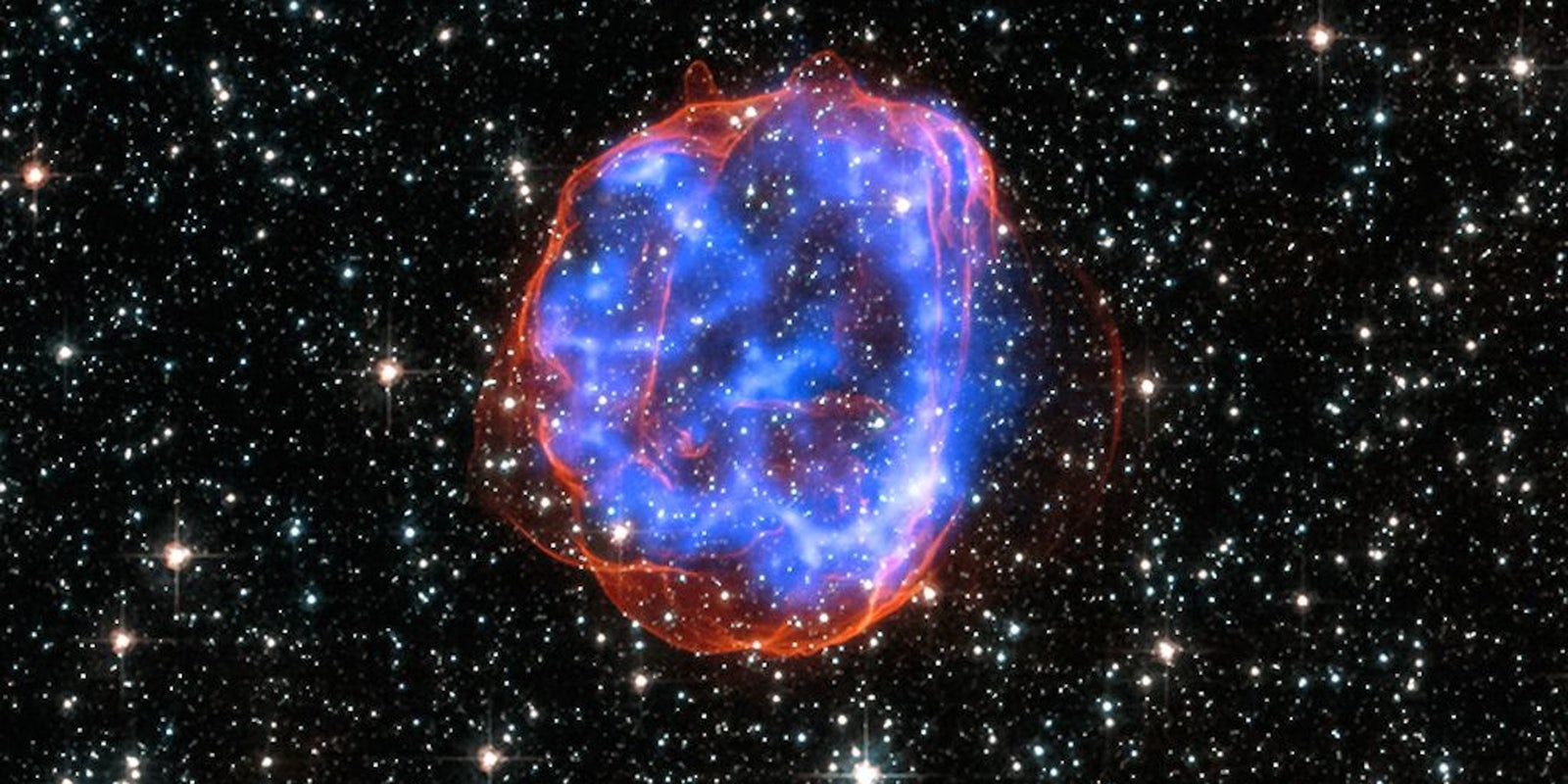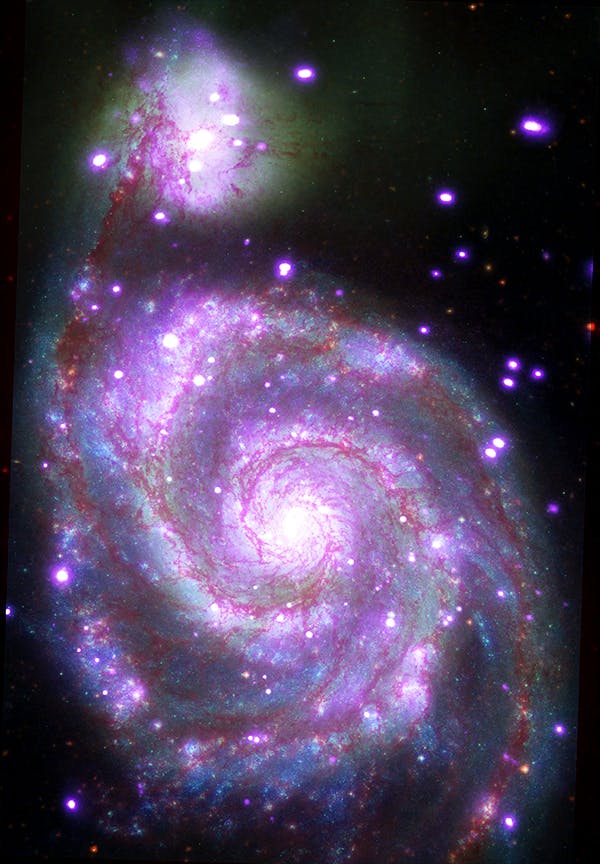
Lisa Granshaw
Internet Culture
Posted on Jan 23, 2015 Updated on May 29, 2021, 5:01 pm CDT
The United Nations has declared 2015 the International Year of Light and Light-Based Technologies. The global initiative is hoping to highlight the importance of light and optical technologies with the help of organizations like NASA, who decided to start celebrating this week with the release of some stunning space images.
The photos were released by NASA’s Chandra X-ray Observatory and include combined data from several telescopes that record different wavelengths of light.
“By studying X-ray data and comparing them with observations in other types of light, scientists can develop a better understanding of objects likes stars and galaxies that generate temperatures of millions of degrees and produce X-rays… From a distant galaxy to the relatively nearby debris field of an exploded star, these images demonstrate the myriad ways that information about the Universe is communicated to us through light,” the observatory explains on its website.
The observatory has also launched an image repository for the International Year of Light, “Light: Beyond the Bulb,” where you can find and contribute images that highlight light-based science. You can see the observatory’s beautiful combined images and learn more about them below. The individual photos from each telescope can be found on their website.
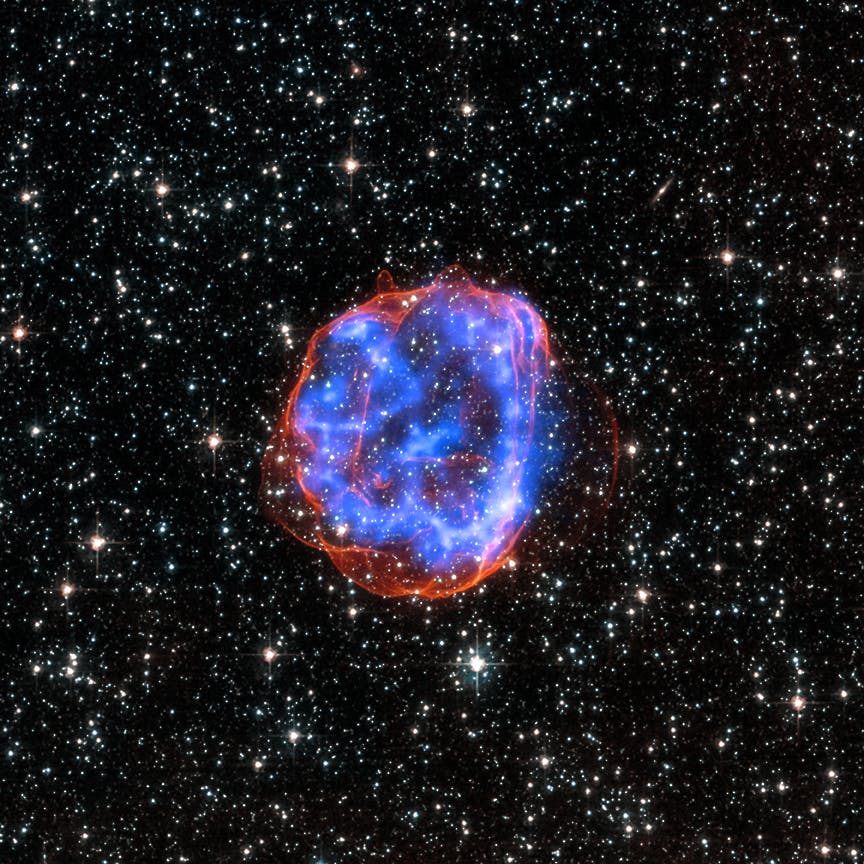
“SNR E0519-69.0: When a massive star exploded in the Large Magellanic Cloud, a satellite galaxy to the Milky Way, it left behind an expanding shell of debris called SNR 0519-69.0. Here, multimillion degree gas is seen in X-rays from Chandra (blue). The outer edge of the explosion (red) and stars in the field of view are seen in visible light from Hubble.”
Credit: X-ray: NASA/CXC/Rutgers/J.Hughes; Optical: NASA/STScI
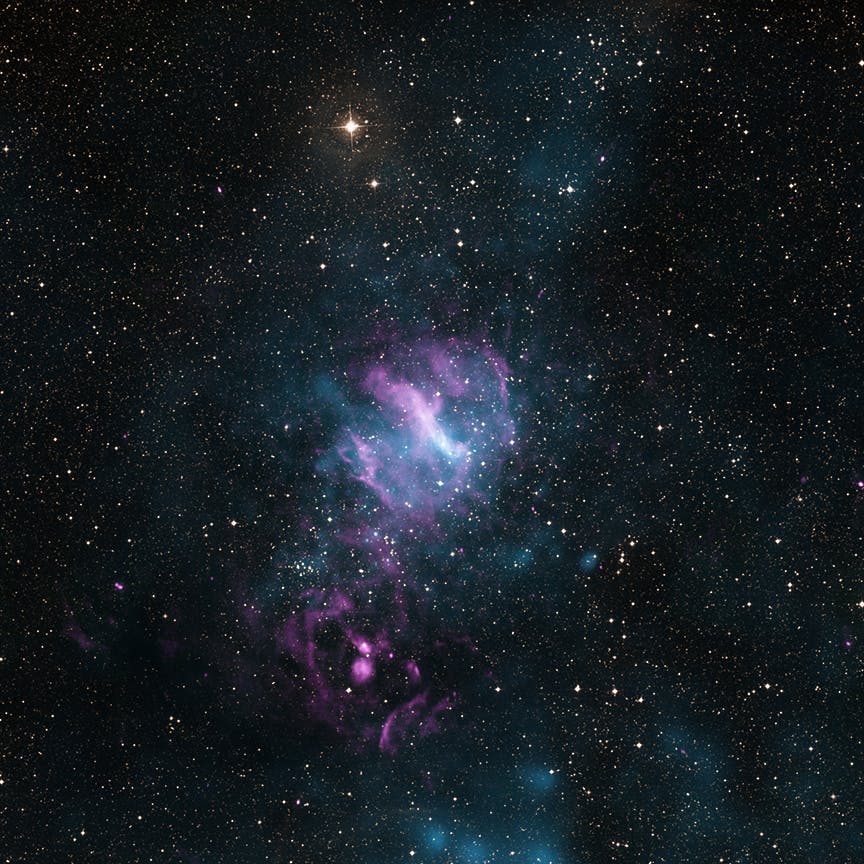
“MSH 11-62: When X-rays, shown in blue, from Chandra and XMM-Newton are joined in this image with radio data from the Australia Telescope Compact Array (pink) and visible light data from the Digitized Sky Survey (DSS, yellow), a new view of the region emerges. This object, known as MSH 11-62, contains an inner nebula of charged particles that could be an outflow from the dense spinning core left behind when a massive star exploded.”
Credit: X-ray: NASA/CXC/SAO/P.Slane et al; Optical: DSS; Radio: CSIRO/ATNF/ATCA
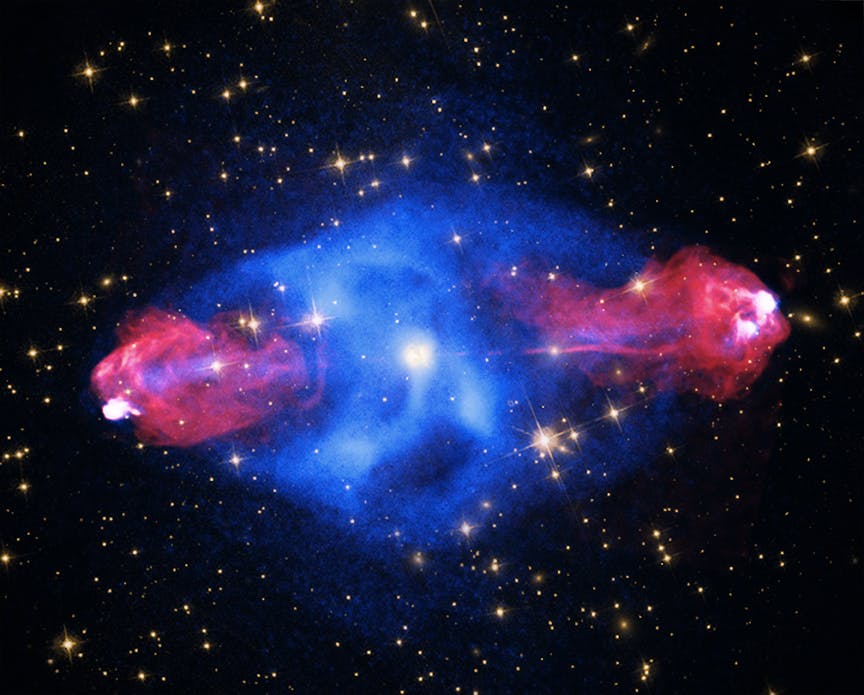
“Cygnus A: This galaxy, at a distance of some 700 million light years, contains a giant bubble filled with hot, X-ray emitting gas detected by Chandra (blue). Radio data from the NSF’s Very Large Array (red) reveal “hot spots” about 300,000 light years out from the center of the galaxy where powerful jets emanating from the galaxy’s supermassive black hole end. Visible light data (yellow) from both Hubble and the DSS complete this view.”
Credit: X-ray: NASA/CXC/SAO; Optical: NASA/STScI; Radio: NSF/NRAO/AUI/VLA
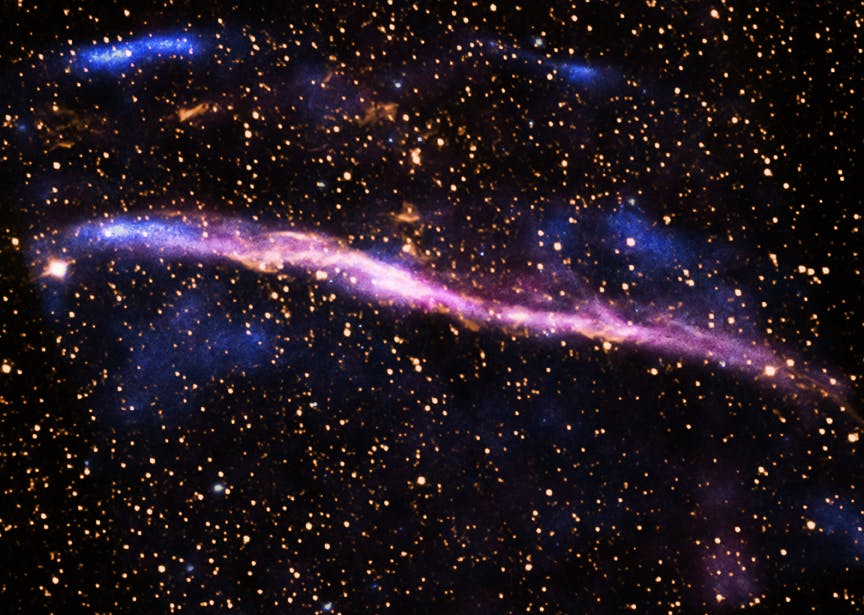
“RCW 86: This supernova remnant is the remains of an exploded star that may have been witnessed by Chinese astronomers almost 2,000 years ago. Modern telescopes have the advantage of observing this object in light that is completely invisible to the unaided human eye. This image combines X-rays from Chandra (pink and blue) along with visible emission from hydrogen atoms in the rim of the remnant, observed with the 0.9-m Curtis Schmidt telescope at the Cerro Tololo Inter-American Observatory (yellow).”
Credit: X-ray: NASA/CXC/MIT/D.Castro et al, Optical: NOAO/AURA/NSF/CTIO
H/T The Washington Post | Image via X-ray: NASA/CXC/Rutgers/J.Hughes; Optical: NASA/STScI
*First Published: Jan 23, 2015, 7:51 pm CST
Lisa Granshaw reports on pop culture and geek fashion and is the founder of GeekFold. You can find her work on Syfy, Boing Boing, and Geek and Sundry.
